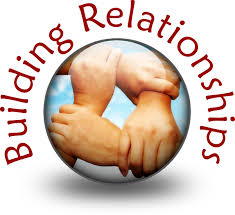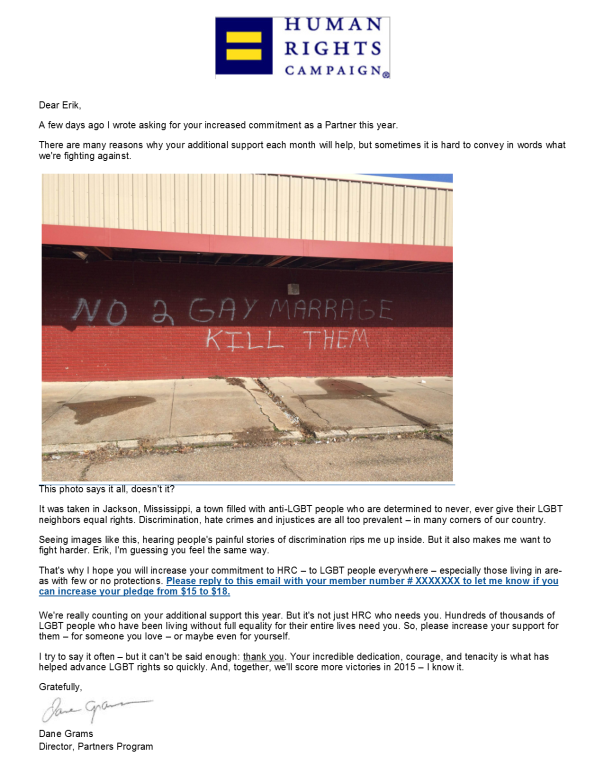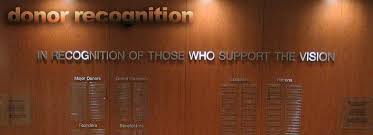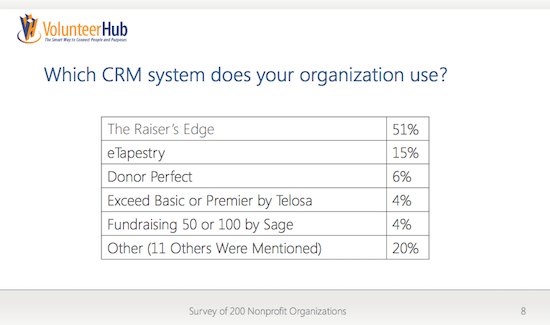 When I was a child, I loved watching cartoons. I was especially a fan of cartoons that featured superheros such as Spiderman, Superman, Batman, etc. I oftentimes found myself daydreaming about having a superpower and what kind of good things I could accomplish with such a power. Yesterday, I went to lunch with an old friend, which got me thinking again about the concept of superpowers and how that idea might apply to your non-profit organization.
When I was a child, I loved watching cartoons. I was especially a fan of cartoons that featured superheros such as Spiderman, Superman, Batman, etc. I oftentimes found myself daydreaming about having a superpower and what kind of good things I could accomplish with such a power. Yesterday, I went to lunch with an old friend, which got me thinking again about the concept of superpowers and how that idea might apply to your non-profit organization.
So, there I was enjoying a wonderful lunch with someone who used to do lots of volunteering for the annual Duck Race fundraising event my former non-profit employer used to run. While it has been 10 years since I worked for that organization and they abandon the duck race approximately five years ago, I’ve maintained a strong relationship with this individual. We’ve been through good times and bad times together.
At some point in the middle of lunch, he pulled out a folder of information and dropped the hammer. He now sits on the board of directors for my former employer, and he agreed to be the chairperson for this year’s annual campaign. He asked if I would consider volunteering and working a few pledge cards.
My first thought was . . . “Uh-oh! I can’t say no to my friend. We’ve been there for each other and that is something for which I am grateful and value.”
My second thought was . . . “Damn, he’s good! He’s obviously been a good listener throughout the years because he was making the perfect ask. I really can’t say NO.”
My third thought was . . . “There is something here that needs to be blogged about.” 🙂
As I sat at my desk this morning thinking through how to tell this story, it dawned on me that “The Power of Relationships” is really every non-profit organization’s “superpower.”
 Of course, the real question is whether or not you’ve learned how to unlock and use your superpower? If you are interested in exploring this question, I suggest you ask yourself the following questions:
Of course, the real question is whether or not you’ve learned how to unlock and use your superpower? If you are interested in exploring this question, I suggest you ask yourself the following questions:
- When looking for volunteers to do something, do you find yourself asking for someone to volunteer in a group setting like a board or committee meeting?
- When facilitating a prospect assignment exercise for your annual campaign (or any number of other fundraising activities), do you let people pick their own pledge card?
- When brainstorming prospective new board members, do you ask your board development committee (or your board members) to identify people who they know who might be interested?
If you’ve answered YES to any of these questions, then you might still be struggling to unlock your organization’s superpower.
Volunteer recruitment
The first bullet point speaks to how you recruit people to serve as committee chairs, event volunteers and annual campaign workers.
If you simply ask for a volunteer from a group, there is no guarantee the “right person” is going to put their hand in the air. The truth is that the person who steps forward might not possess the right skills to get the job done. Moreover, they may not have the right relationships with others who they will need to call upon to ensure success.
If you want to unlock your superpower talent, then focus on:
- identifying the necessary skill sets necessary for success
- identifying the type of relationships your leader/chairperson needs to possess for success (also look at their social network for relationships they may have with specific people)
- developing written job descriptions for every volunteer opportunity and using this tool in the recruitment process
- investing time in developing a prospect list for each volunteer position you need to recruit
Prospect assignment
The second bullet point speaks to how you assign donor prospects to volunteer solicitors.
If you simply spread pledge cards out on a table and ask people to choose whomever they wish, then you are leaving much to chance. Additionally, you can’t guarantee that the person with the “right relationship” will get the assignment.
If you want to appropriately use your superpower talent, then consider:
- distributing a list of donor prospects to your volunteer solicitors in advance of your kickoff meeting
- ask each solicitor to identify twice as many prospects who they’d feel comfortable asking for a pledge/contribution (e.g. if everyone is being asked to solicit five prospects, then ask them to identify 10 prospects with whom they have relationships)
- review everyone’s submissions and assign prospects based on your knowledge of who has the best relationships with your donor prospects
- come to the kickoff meeting with solicitation materials and packets ready to distribute to specific volunteers
Board recruitment
The final bullet point speaks to how you strategically put the right people with the right skill sets and relationships around your boardroom table.
Simply asking for suggestions is akin to asking for warm bodies, which is not what you need more of in your boardroom.
Those who invest time in completing a “gap assessment” and developing prospect lists based on those gaps are significantly more effective in growing their organizational capacity. I especially like it when the gap assessment takes into consideration your board’s ability to access specific social circles in your community.
Have you figured out how to tap into “The Power of Relationships?” If so, please share an example in the comment box below. We don’t have to reinvent the wheel because we can all learn from each other.
Here’s to your health!
Erik Anderson
Founder & President, The Healthy Non-Profit LLC
www.thehealthynonprofit.com
erik@thehealthynonprofit.com
http://twitter.com/#!/eanderson847
http://www.facebook.com/eanderson847
http://www.linkedin.com/in/erikanderson847

 I’ve had a recurring thought for the last two weeks because I keep running across beautiful donor recognition walls at non-profit organizations. Just yesterday I came across a donor recognition board in the lobby of the Knight Nonprofit Center on the Gulf Coast in Mississippi, and it was titled the “Mural of Generosity“. I just love the sound of that. Don’t you?
I’ve had a recurring thought for the last two weeks because I keep running across beautiful donor recognition walls at non-profit organizations. Just yesterday I came across a donor recognition board in the lobby of the Knight Nonprofit Center on the Gulf Coast in Mississippi, and it was titled the “Mural of Generosity“. I just love the sound of that. Don’t you? Last week I had the privilege of soliciting someone for an annual campaign pledge over a cup of coffee. In addition to securing their pledge, this was a nice opportunity to catch up because we hadn’t seen each other in a few years. As I neared the bottom of my cup of coffee, this donor reminded me of something important concerning most non-profit organization’s annual campaign efforts and donor loyalty rates.
Last week I had the privilege of soliciting someone for an annual campaign pledge over a cup of coffee. In addition to securing their pledge, this was a nice opportunity to catch up because we hadn’t seen each other in a few years. As I neared the bottom of my cup of coffee, this donor reminded me of something important concerning most non-profit organization’s annual campaign efforts and donor loyalty rates.
 Last week, I wrote a blog titled “
Last week, I wrote a blog titled “ I wonder if these influences on the next generation of donors and fundraising volunteers will have an impact on the art of face-to-face solicitation and the future of philanthropy?
I wonder if these influences on the next generation of donors and fundraising volunteers will have an impact on the art of face-to-face solicitation and the future of philanthropy? A few days ago, I was Skyping with Henry Freeman, the owner of
A few days ago, I was Skyping with Henry Freeman, the owner of  When I was a child, I loved watching cartoons. I was especially a fan of cartoons that featured superheros such as Spiderman, Superman, Batman, etc. I oftentimes found myself daydreaming about having a superpower and what kind of good things I could accomplish with such a power. Yesterday, I went to lunch with an old friend, which got me thinking again about the concept of superpowers and how that idea might apply to your non-profit organization.
When I was a child, I loved watching cartoons. I was especially a fan of cartoons that featured superheros such as Spiderman, Superman, Batman, etc. I oftentimes found myself daydreaming about having a superpower and what kind of good things I could accomplish with such a power. Yesterday, I went to lunch with an old friend, which got me thinking again about the concept of superpowers and how that idea might apply to your non-profit organization. Of course, the real question is whether or not you’ve learned how to unlock and use your superpower? If you are interested in exploring this question, I suggest you ask yourself the following questions:
Of course, the real question is whether or not you’ve learned how to unlock and use your superpower? If you are interested in exploring this question, I suggest you ask yourself the following questions: I believe that sometimes the universe speaks to you, and over the last two days I’ve been beat over the head with reminders that your non-profit organization’s donor recognition must be meaningful. While there is a time and place for computer generated gift acknowledgement letters and donor gifts, you need to know your donor and appreciate them in a way that speaks to their inner philanthropic soul.
I believe that sometimes the universe speaks to you, and over the last two days I’ve been beat over the head with reminders that your non-profit organization’s donor recognition must be meaningful. While there is a time and place for computer generated gift acknowledgement letters and donor gifts, you need to know your donor and appreciate them in a way that speaks to their inner philanthropic soul. To sum up the results of yesterday’s discussion, the volunteers decided that donor recognition and gifts should be personal, mission-focused and meaningful.
To sum up the results of yesterday’s discussion, the volunteers decided that donor recognition and gifts should be personal, mission-focused and meaningful.

